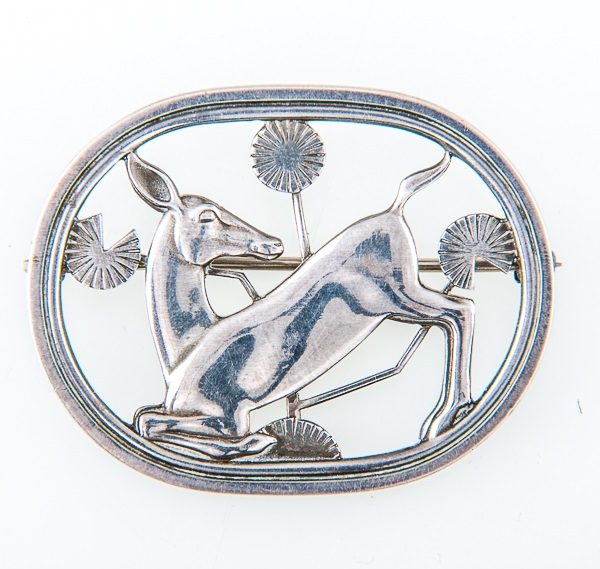

Jewellery can be subtle and understated, it can be bold, even outrageous, but it is always very individualistic and personal to the wearer. Throughout our history, the adorning of the body with items and materials fashioned into wearable jewellery has brought with it a plethora of different styles, techniques, and craftsmanship. Whether these items reflect status, or love, or grief, or other sentiments and emotions, we all have our own cherished pieces. In today's world the commercial demand for items of antique jewellery continues to strengthen. Fashions and trends can be short lived. That is why having a jewellery appraisal by a professionally qualified valuer is paramount for providing impartial, non-obligatory advice.
At Gildings our comprehensive auction calendar covers all budgets when buying or selling jewellery at auction. We host specialist Jewellery and Watch auctions every other month. Our fortnightly Antiques & Collectors auctions can also feature items of antique, vintage and costume jewellery, so there is nearly always some jewellery on offer throughout the year. All auctions can be viewed at our saleroom in Market Harborough, Leicestershire, with easy transport links via road and rail.
If buyers are unable to attend the auction, they can bid online, via the telephone, or leave an absentee bid.
If you would like to be kept informed of jewellery valuations and jewellery auctions sign-up to our dedicated newsletter. We’ll alert you to upcoming events, consignment closing dates, and other jewellery-related news. Or if you’re looking for something specific, create an account and set up a Lot Alert - we’ll send you a notification of anything meeting your criteria coming up for auction with us.
If buyers are unable to attend the auction, they can bid online, via the telephone, or leave an absentee bid. You can find out more about our bidding options here.
If you have an item or items of jewellery that you would like valued for auction it couldn’t be easier. A realistic auction estimate can only really be discussed having seen and handled the item, given the number of factors that go into determining the value of jewellery. Our in-house specialist, Denise Cowling RJ Dip. FGA, has over 40 years of experience within the jewellery retail and auction industry. Denise can book an appointment with you to have items valued on our premises. You can submit images of items you are considering selling, and our Team will call to discuss in a little more detail. However, given the wide variety of stones and materials used in jewellery, valuations via images alone are not always possible. You can submit an enquiry via our Valuations Form where you can upload images and details of your items.
Gildings can also provide professional jewellery valuations for probate purposes. As a professional valuation there would be a charge for this service. Please contact us to discuss further.

Georgian jewellery can still be found today although it often takes a qualified experienced valuer to identify such pieces. Garnets were very fashionable in Georgian times and were frequently pave set in rings, brooches, bangles and necklaces. Any gems having closed back settings, unusual in not letting light pass through the stone, were very popular as well. Jewellery with unusual shaped natural pearls could date from this period, predating cultured pearls. Rose cut diamonds with a faceted dome top and flat back, are often mistaken for low value paste. Equally, silver jewellery set with diamonds and coloured gems was common, as platinum and white gold was not used until much later. Elaborate buckles set with white paste were favoured by the Georgians on their shoes and breeches and have long since been collectors’ items. Also popular with collectors are seals or fobs with a carved crystal in the base often a crest or monogram.

This era saw considerable material prosperity in the country and is evident in the fine jewellery that was commissioned during his time. Wearable items of jewellery reflected the individual’s success and often status in society from the industrialist, the manufacturer, the professional, to the local shopkeeper or servant. 18 carat gold was being favoured as the preferred standard of gold for setting with the fashionable stones of the time including Coral, Turquoise, Topaz, Pearls and the more precious Diamonds, Rubies, Sapphires and Emeralds.
Big was beautiful – wide half hinged bangles, large oval lockets on collars, richly coloured graduated amber bead necklaces, brooches set with large banded agates, suites of matching jewellery were created with top retailers offering such jewellery in elaborate fitted boxes. Complete sets today attract strong demand at auction.
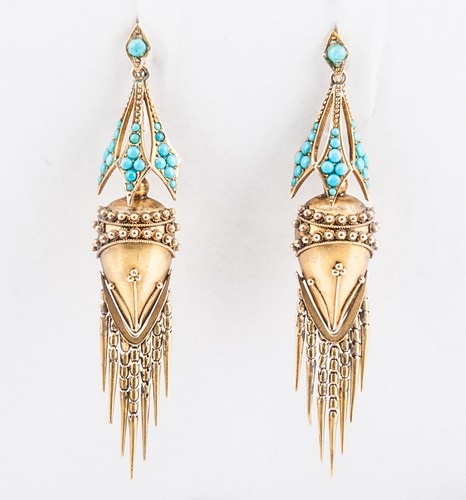
From early times, jewellery has been crafted in memory of departed love ones, leaders, and monarchs. In the last few years Mourning Jewellery has increased in value way over the intrinsic value of the gold and stones of the pieces, commanding very high prices in the collecting field.
The 17th century Momento Mori Jewellery (from the Latin “Remember that you will die”) prompted you to consider your fate and honour the dead in the messages behind these centuries’ old styles, mostly displaying skulls with or without crossbones they originated in Roman times. To this day Alexander McQueen and Damien Hirst have gained inspiration from this early art form.
From 1861, following the death of Prince Albert, we see the rise of less shocking mourning jewellery favoured by Queen Victoria and the nation reflecting their Queen’s grief. Most commonly Jet, which was being mined and washed up upon the shores of the Yorkshire town of Whitby, was fashioned into all types of jewellery. But it can take many forms beyond the traditional Jet jewellery. 18th and 19th century rings and brooches with inscriptions to the bands; Black enamel rings overlaid in gold with a name and date; Intricately woven hair lockets often set with the tiniest of seed pearls; Rings and seals carved with a crystal of a weeping willow the symbol of loss and remembrance; Black onyx jewellery, often with a pearl, cross or star and with laurel leaves. These often small and insignificant jewels can be found languishing and forgotten for generations in the bottom of a jewel box, at Gildings we delight in finding these historical pieces and offering them to a wealth of buyers that will treasure them for years to come.
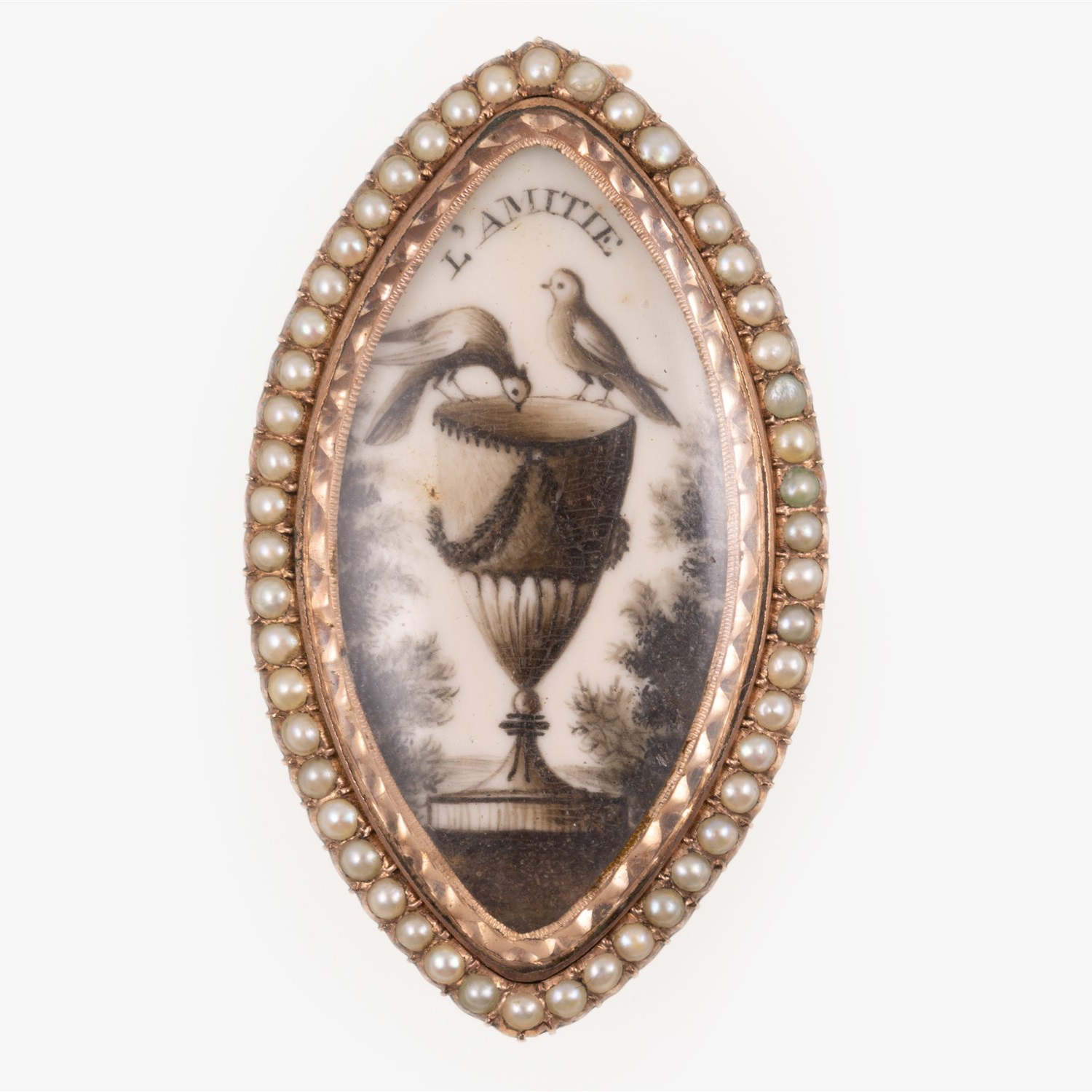
Most popular during what is known in jewellery circles as “The Victorian Romantic Period”; Queen Victoria’s sentimental side was seen in her love for insect and animal jewellery forging a great fashion in such pieces. Her light spirit and love for Prince Albert was evident for all to see and women were keen to follow her lead. The fashion accessory of the time was a beautiful gem encrusted “Bug” brooch on your lapel or evening gown - very de rigueur! They often display underlying messages and meanings such as Dragonflies and Butterflies symbolising romantic and feminine; beetles and spiders were considered brave, and nature lovers; scarabs for the independent, strong, traveller types. All of these little creatures set with the most beautiful of gems, diamonds, sapphires, emeralds, rubies and opals. The skill of the jeweller became evident in the detailed life like execution of these exquisite pieces. Today these brooches are still worn and collected as cabinet pieces.
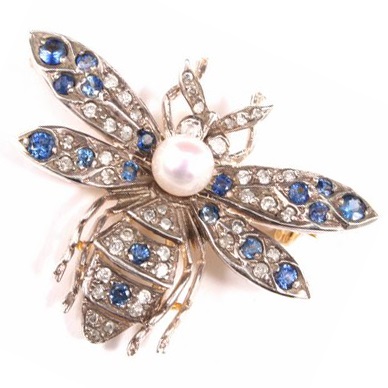
The primary purpose of suffrage jewellery was to demonstrate its wearer’s allegiance to the cause of women’s suffrage movement in the UK. The Women’s Social and Political Union adopted the colour scheme purple – symbolising dignity – white for purity - and green for hope. Suffragettes and sympathisers sought out jewellery being produced in these colours to support the cause. Brooches, pendants, rings, badges all set with gems in the suffrage colours. The green commonly represented by Emerald and Peridot; purple by Amethyst; and white by Pearls. The items were often enhanced corresponding enamel colours. It was such a commercial avenue at the time that retailers such as Mappin & Webb even produced a specific catalogue of suffragette jewellery for Christmas in 1908. Now highly prized and collected as beautiful jewels of historical significance – demand is very high for sourcing these elusive pieces.
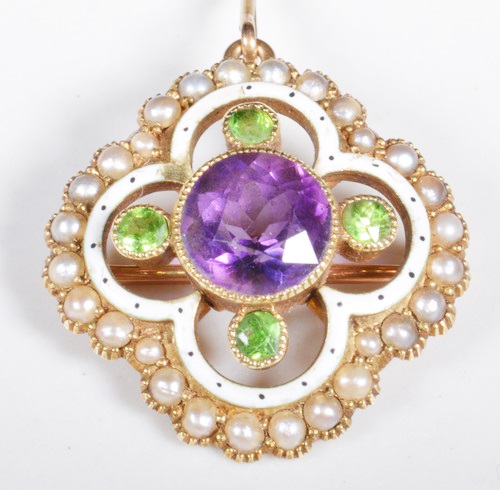
Formed between 1 billion and 3.5billion years ago, diamonds have been a lasting symbol of love and devotion for centuries. The hardest known substance to man was a rare commodity until the commercial mining in the 19th century. Still arguably the most impacting and captivating individual item of jewellery can be a solitaire diamond. The solitaire diamond with 57 facets or the older Victorian old cut diamond with 58 facets is a firm favourite in today’s market, as are modern cuts such as the Princess cut. Whether it be a solitaire ring, pendant, or pair of earstuds, this is high fashion for the 21st century.
At Gildings Auctioneers we have a waiting market for diamond solitaires, whether it is young loves looking for that special engagement ring, a ring for a significant milestone, a diamond pendant for a bride, or ladies treating themselves! It is fair to say you can get a lot more diamond for your budget at auction compared to a retail scenario. Eternity rings, either full of half, remain a very popular gift to signify the never ending love within a relationship.

Following the austere post war years of the late 1940’s and 1950’s, designers emerged on the jewellery scene experimenting in materials and lesser known gem stones. The underlying element linking the young new jewellers was a freedom of style and creativity allowing the metals and gemstones to dictate the design, as seen in the beautiful natural crystal jewellery. At the fore front was the doyen of modern jewellery design in Great Britain, Andrew Grima, who was designing pieces for Her Majesty the Queen. Renowned silversmith and jeweller Louis Osman was commissioned to produce the Welsh gold and diamond set crown for the investiture of The Prince of Wales in 1969. It was the first crown of contemporary design to be produced in the 20th century. In 1972 De Beers released their “Atlantis Collection” of diamond jewellery, featuring John Donald and David Thomas. Regionally, jewellery designers such as Ernest Blyth, Geoffrey Bellamy, and Peter Triggs and Tom Payne, produced studio-made pieces for the discerning collector. The influence from Scandinavian designers such as Georg Jensen, Hans Hansen, Lapponia, David Andersen, Anton Michelsen, Niels Erik From, Ole Lynggaard, to name a few, was wide-felt and continues to inspire and influence contemporary designers even today.
It is important to remember the jewellery market is driven by fashion, and often trends can come and go again in a relatively little time period. But what goes around comes around! As with any purchase, buy something because you love it and you want to wear it for the here and now.
